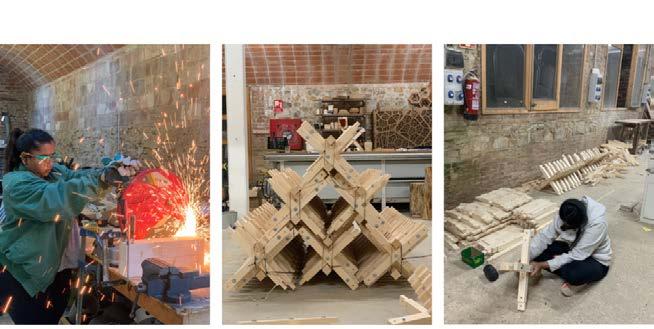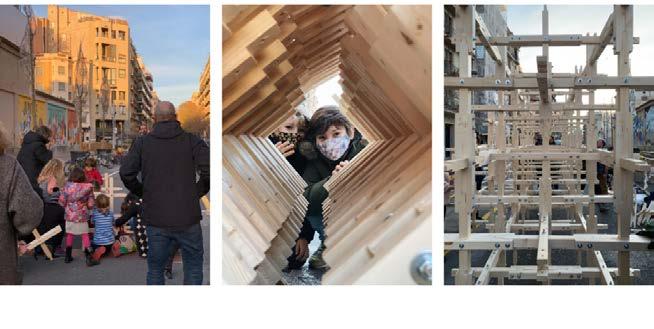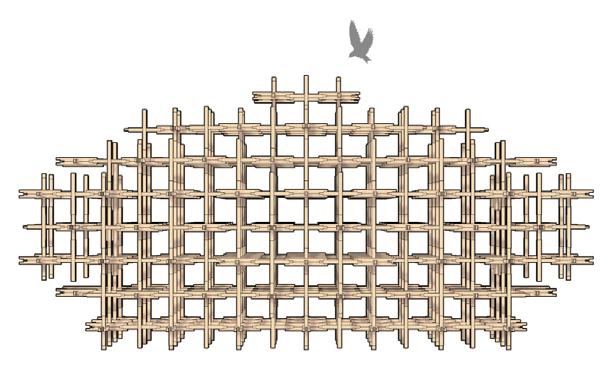
2 minute read
CONCLUSIONS
by roshni
Sustainability- Flea markets are a destination for second hand and resale products. Resale and reuse of products promotes the idea of sustainability. Since the market is an unbuilt structure and can be assembled and disassembled it leaves no residue imprints on the ground and does not have a negative impact on the environment.
Temporality- This market happens once a week for the entire day and the host public space is open to a different use for rest of the week making the space multi-functional. Also, it creates a sense of event among the local population where people look forward to finding some unique products and being a part of a large gathering.
Advertisement
Low cost- Since Shukravari is temporary, it is generally built with make-shift techniques that are easy, cheap and sustainable. The products on sale are also second hand goods that can be bought at a bargained rate.
Adaptive- Unorganized nature of the market allows it to be highly flexible, adaptive and inclusive making it an open ended expression.
Democratic- Shukravari is not governed by a private person, organization or group and is neither is it a government owned market, it is set up by the local communities of vendors belonging to all religious and socio-economic backgrounds. Hence anyone and everyone is free to attend or partake in the market.
Variety- Unlike buit markets of cloth, fruits and vegetables, crockery, etc; the Shukravari is not dedicated to any particular product giving it the unique quality of anything and everything and increasing its reach through the various sections of the society.
Credits: Romain Russe, Roshni Shah
Mentored by- Bruno Ganem
The Anti-gravity lamp, as the name suggests, was conceived as a structure that creates an illusion of standing without a support giving it a magical effect.
Project brief
Designing products to understand the interaction of fabrication tools and machines with various materials. The base material provided was a Plywood sheet of 2400mm x 1500mm x 15mm
Design process
Tensegrity is a structural principle where compression members are arranged within a loop of tension members so as to generate a prestress and allowing the structure to eliminate external support and stand by itself.
The first step of designing a lamp was to understand the functioning of tensegrity in order to manipulate it for the ‘magic’ effect. Quick prototyping was an essential step to develop an optimized design.
A simple tensegrity tripod module was generated in grasshopper in order to stimulate modifications.
Design decisions:
- Eliminating vertical tension members in the tripod
- Scaling up the base triangle for structural stability
- Twisting the top triangle and re-connecting the compression members
Assembly
Materials used:
- 2400mm x 1500mm x 15mm Plywood sheets
- Recyclable red PLA
- 3mm tension cables
- 21V LED strip [3000k warmth]
- Electrical cable
- Wire sleeve
- 2mm transparent acrylic sheet
Fabrication process
Step 1- Preparing CNC files for plywood members
Step 2- 3D printing the connectors
Step 3- Electrical connections
Step 4- Connecting tension members
Step 5- Assembly

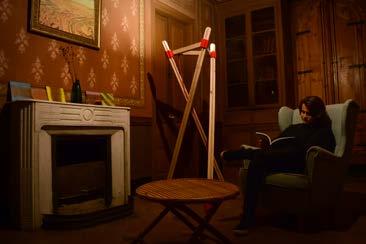
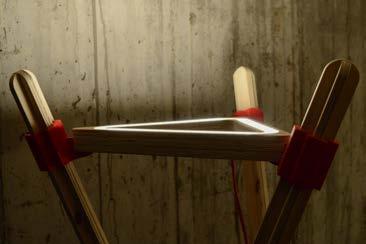
Credits: Students at Valldauura LabsBatch of 2020-21, Alex Hadley, Bruno Ganem, Kya Kerner, Vicente Guallart, Daniel Ibanez
The intention of this wooden nest is to enhance and uplift the entrance to the School, bringing the energy of the forest down to the city. ]This nest is constructed from over 1.500 wooden elements, each cut using robotic precision to carry the structure above the wall. The pieces are modular and self-supporting, meaning the form is flexible yet the structure becomes rigid when connected together. This project was designed and assembled by the students and staff at Valldaura Labs, in collaboration with the students and families of Escola Entença.
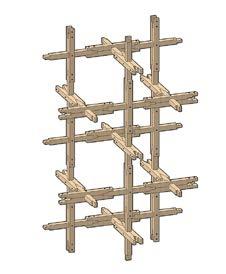
Assembling with students and parents
